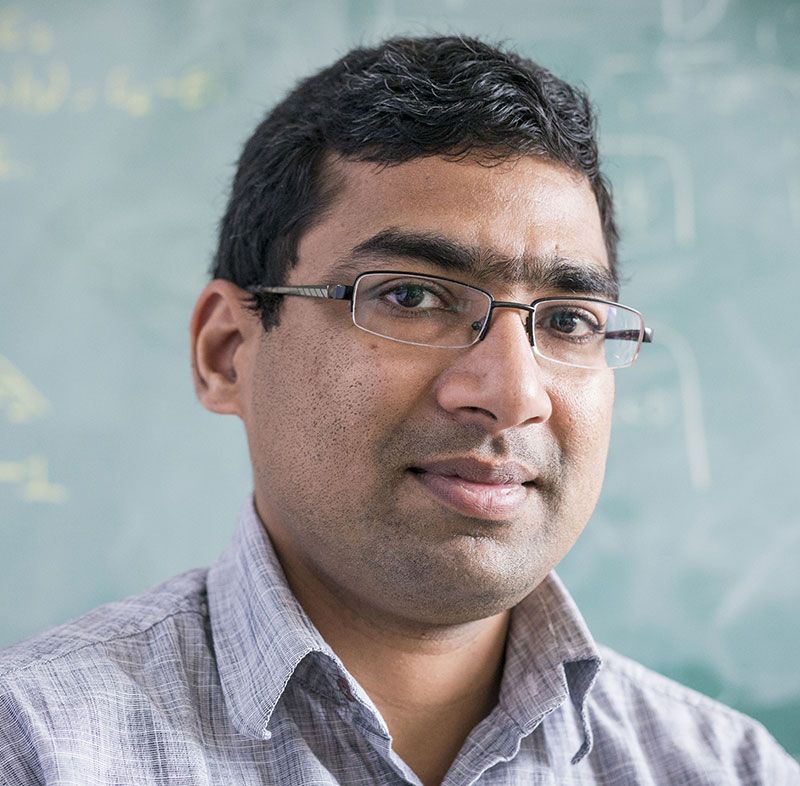
Terahertz lasers could soon have their moment.
Emitting radiation that sits somewhere between microwaves and infrared light along the electromagnetic spectrum, terahertz lasers have been the focus of intense study for a number of potential applications: They’re able to penetrate common packaging materials, such as plastics, fabrics, and cardboard. They can be used for identification and detection of various chemicals and biomolecular species. They can even image some types of biological tissue without causing damage.
Fulfilling their potential hinges on improving their intensity and brightness, achieved by enhancing power output and beam quality. Sushil Kumar, an associate professor of electrical and computer engineering, and his team are working at the forefront of terahertz semiconductor “quantum-cascade” laser (QCL) technology.
In 2018, Kumar reported on a simple yet effective technique to enhance the power output of single-mode lasers based on a new type of “distributed-feedback” mechanism that was seen as a major advance. Graduate students supervised by Kumar, including Yuan Jin, worked in collaboration with Sandia National Laboratories.
Now, Kumar, Jin, and John L. Reno of Sandia are reporting another breakthrough: They have developed a new phase-locking technique for plasmonic lasers and, through its use, achieved a record-high power output for terahertz lasers. Their laser has produced the highest radiative efficiency for any single-wavelength semiconductor QCL to date, which is a significant result in itself given that the QCLs were invented more than two decades ago and further performance improvements have been difficult to come by. A paper explaining the results was recently published in Optica.
“To the best of our knowledge, ours is also the first report of a radiative efficiency of greater than 50 percent achieved in such QCLs,” says Kumar. “Such a high radiative efficiency beat our expectations, and it is also one of the reasons why the output power from our laser is significantly greater than what has been achieved previously.”
To enhance the optical power output and beam quality of semiconductor lasers, scientists often utilize phase-locking, an electromagnetic control system that forces an array of optical cavities to emit radiation in lockstep. Terahertz QCLs, which use optical cavities with metal coatings (claddings) for light confinement, are a class of lasers known as plasmonic lasers that are notorious for their poor radiative properties. There are only a limited number of techniques available in prior literature, according to the team, that could be utilized to improve radiative efficiency and output power of such plasmonic lasers by significant margins.
“Our scheme is distinctly different,” says Jin. “It makes use of traveling surface waves of electromagnetic radiation as a tool for phase-locking of plasmonic optical cavities. The method’s efficacy is demonstrated by achieving record-high output power for terahertz lasers that has been increased by an order of magnitude compared to prior work.”
Traveling surface waves that propagate along the metal layer of the cavities, but outside in the surrounding medium of the cavities rather than inside, is a unique method that has been developed in Kumar’s group in recent years and one that continues to open new avenues for innovation. The team expects that the output power level of their lasers could lead to collaborations between laser researchers and application scientists toward development of terahertz spectroscopy and sensing platforms.
This research represents a paradigm shift in how such single-wavelength terahertz lasers with narrow beams are developed and will be developed going forward, says Kumar. “I think the future of terahertz lasers is looking very bright.”

